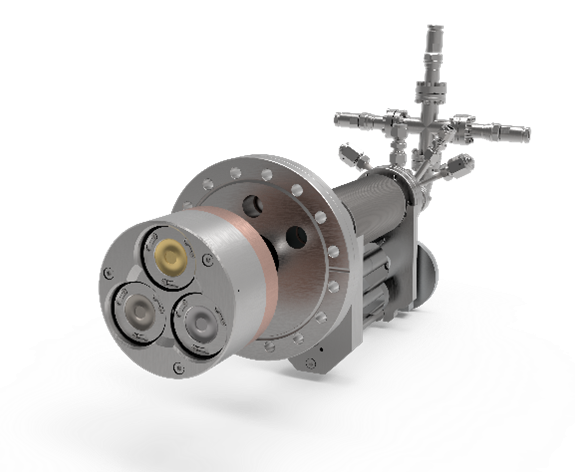Green hydrogen has been identified as a key technology for reducing reliance on fossil fuels and achieving net zero. Soon researchers in this field will have access to a brand new Royce Institute funded electrocatalyst facility at Oxford University’s Materials department. The facility will be managed by the Energy Materials Interfaces group, headed up by Associate Professor Robert Weatherup. The group will be using the new equipment to study the physics of interfaces with the aim to develop more efficient electrocatalysts for hydrogen. A key part of this capability will be the Nikalyte NL-UHV nanoparticle source.
The NL-UHV uses a process called gas terminated deposition to generate ultra-pure nanoparticles in vacuum, which unlike chemically synthesized nanoparticles are free of hydrocarbon and ligands. The Oxford nanoparticle source is also equipped with the versatile NL-DX3 triple-headed magnetron which will enable the team to generate ultra-pure nanoparticles from three different materials in situ and also experiment with alloy nanoparticle formation. Through individual control of the power supplied to each individual target and the variation of other process parameters, including gas flow, gas type and nanoparticle aggregation zone length the team will be able to explore a wide range of nanoparticle properties. The source will be used in conjunction with thin film deposition capability and Xray photoelectron spectroscopy (XPS) analysis to study new electrocatalysts from materials including platinum and copper. The Facility is due to open later this year.
The Royce Institute facilities and equipment are open for use by industry and academic researchers alike and are located at laboratories across the country, including Oxford University, Cambridge University, Manchester University, Sheffield University and UKAEA.


Figure 1 Platinum nanoparticle generated in the NL-UHV (top), Image of NL-DX3 tripled headed sputter source (bottom)
For more information contact [email protected] or visit https://www.nikalyte.com/